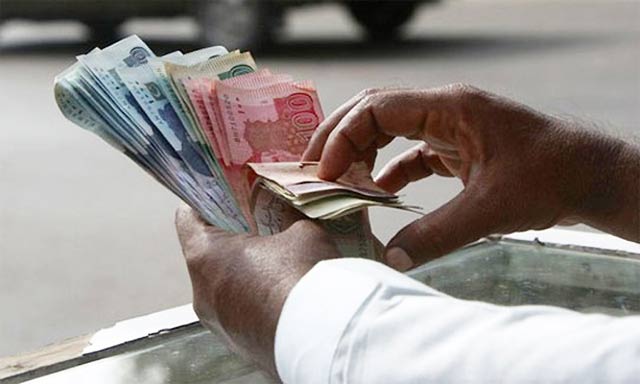
KARACHI
The balance of payment figures rang an alarming bell for the economists as the country’s current account deficit almost tripled to $8.929 billion in July-May 2016-17 compared to a deficit of $3.217billion in the same period last year, the data released by the State Bank of Pakistan (SBP) said here on Thursday.
The analyst says, “The current A/C deficit widened only because of rising country’s imports bills and lower inflows of remittances.” The current account deficit widened almost tripled or increased by 177 per cent in last eleven months.
Despite all the weak indicators, the SBP figures show that the country’s Gross Domestic Product (GDP) surged by 8.23 per cent to reach $278.697 billion in such period of 2016-17 compared to $255.738 billion in same period last fiscal year. According to the SBP’s projection, full year GDP growth would remain around 5 – 5.50 per cent in the current fiscal year.
According to an analyst, “Pakistan’s Current Account deficit reached $1.58 billion in May 2017, highest since October 2008. The country’s current account deficit has touched $1.58 billion in May 2017 compared to $1.2 billion in April 2017.”
“This is third highest in the history,” the analyst said. “Last time in October 2008, CA deficit touched $2.4 billion while in November 2007 it reached $1.7 billion,” he added.
The primary reason for the surge is 13 per cent MoM increase in imports to $4.6 billion. While continued repatriation of profits took the primary income deficit to $635 million in May 2017 versus $424 million in April 2017, he claimed.
The import bills had touched $42.492 billion which is almost above the double of the local export’s inflows, the SBP’s data said.
The central bank, from March this year, has imposed 100 per cent cash margin condition on the import of all luxurious items and imported vehicles. This decision of the SBP supposed to control the local import’s bill in last three months, the analyst claimed.
Commenting on Moody’s rating for Pakistan, the analyst said that the country has hardly three-and-a-half months import bill amount, which it has to provide in shape of L/Cs, food import bills, edible oil import bills and crude oil bills.
The State Bank is facing payment pressure of international donor agencies including the International Monetary Fund (IMF). The central bank has so far maintained exchange rates in the interbank market despite pressure on dollar. Now it is being traded in the interbank market at Rs 104.85 today compared with $104.83 in May 2016.
The country’s exports fell by 3.12 per cent to $18.541 billion in July-May 2016-17, while import figures touched an all-time high of $48.539 billion or 20.60 per cent during the same period.
The country’s exports stood at $18.541 billion in last eleven months of the current fiscal year compared to $19,140 billion last year, down by $599 million, while imports of the country touched $48.539 billion compared to $40,247 billion in the same period last years.
Trade deficit further enhanced up to $29.998 billion in July-May 2016-17 up by 42.12 per cent compared to $21.107 billion in the same period last year. It surged by 60.79 per cent in May 2017 on a YoY basis, while enhanced by 8.52 per cent up on an MoM basis.
The country received foreign direct investment (FDI) of $2.028 billion in July-May 2016-17, up by 22.6 per cent compared to $1.654 billion in same period last year.
In May 2017, the country received an amount of $294.7 million in the head of direct investment, while it received $321 million in total foreign investment up by 62.6 per cent compared to $120.5 million received in May 2016.
Total foreign investment of the country increased by 110.8 per cent to $2.644 billion in last eleven months of the current fiscal year compared with $1.254 billion in the same period last year.
Overseas Pakistani workers remitted $17.464 million in first eleven months (July to May) of 2016-17 down by 2.17 per cent, compared with $17.844 million received during the same period in the preceding year.
During May 2017, the inflow of worker’s remittances amounted to $1.867 billion, which is 21.36 per cent higher than April 2017 and 3.77 per cent higher than May 2016.
